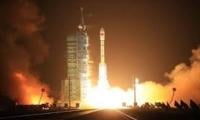In Pakistan, the landscape of power tariffs is shaped significantly by the framework of Power Purchase Agreements (PPAs) and is directly connected to macroeconomics.
Under these agreements, the costs associated with power generation are bifurcated into fixed (capacity charges) and variable (fuel charges) components, each meticulously indexed to various economic indicators. The fixed (capacity) costs and variable (fuel) costs are not merely static figures but fluctuate in response to changes in the dollar exchange rate, local and foreign interest rates, and local and foreign inflation rates. This indexing mechanism was designed to safeguard investors and offer lucrative agreements but now creates a complex pricing environment, deeply intertwined with broader macroeconomic factors.
Inflation in Pakistan has long been a slippery slope, influenced by a plethora of domestic and international factors, with exchange rates and interest rates playing starring roles. The exchange rate, particularly the value of the Pakistani rupee against major currencies like the US dollar, acts as a silent puppeteer, pulling the strings of inflation. A depreciating rupee spells trouble, escalating the cost of importing essential goods and services, from raw materials and machinery to consumer products. This dependency on imports makes every dip in the rupee’s value an open invitation to inflationary pressures.
Interest rates, both at home and abroad, are equally significant in this dance of macroeconomic variables. Domestically, the State Bank of Pakistan (SBP) wields interest rates like a double-edged sword. High inflation prompts the SBP to hike interest rates, aiming to dampen borrowing and spending. This, in theory, cools the economy and reins in inflation. However, the dilemma starts in the power sector – the higher interest rates increase the capacity charges of power plants, crippling the effectiveness of these maneuvers.
Global interest rates cast a long shadow over Pakistan’s economy. When major economies like the United States hike their interest rates, capital tends to flow out of emerging markets like Pakistan. Investors chase higher returns, leading to a depreciating rupee and escalating import costs, which in turn fuel inflation. Furthermore, higher global interest rates inflate the cost of servicing Pakistan’s external debt, stretching the economy thin and potentially forcing the government to print money – a surefire recipe for more inflation.
The interplay between exchange rates and interest rates creates a complex web that influences inflation in Pakistan. For instance, if the SBP raises interest rates to combat inflation, it could attract foreign investment, thereby appreciating the rupee and reducing import costs. However, this must be delicately balanced against potential drawbacks such as slower economic growth and rising unemployment. Additionally, global economic conditions, including commodity price fluctuations and geopolitical shifts, further complicate the picture, affecting both exchange rates and interest rates in multifaceted ways.
Well, for rational navigation in these tumultuous waters, policymakers face the Herculean task of maintaining price stability while fostering economic growth. The trade-offs between controlling inflation and supporting economic activity remain a perennial challenge for Pakistan’s economic managers.
The macroeconomic landscape and power tariffs in Pakistan undergo quarterly adjustments, driven by a medley of factors. For instance, data from the Sahiwal coal power plant illustrates how these variables impact electricity generation costs and, consequently, power tariffs. Exchange rates are a linchpin in the power tariff equation, affecting the cost of imported fuels for power generation. From a reference period of 2016 and the exchange rate of Rs104.594/USD, the rupee has depreciated sharply to Rs278.500/USD in the April-June 2024 quarter. The tariff has been indexed to the US dollar and it reflects increases in various costs: fixed operating and maintenance costs have risen by 235 per cent, return on equity has increased by 184 per cent, debt repayment has gone up by 169 per cent, and interest charges have surged by 343 per cent.
Interest rates, both domestic and international, also bear heavily on power tariffs. The three-month KIBOR (Karachi Interbank Offered Rate) surged from 6.150 per cent to 21.990 per cent, while the three-month LIBOR (London Interbank Offered Rate) climbed from 1.380 per cent to 5.560 per cent. These higher rates inflate the cost of borrowing for power generation companies, with the cost of working capital soaring from Rs0.1541/kWh to Rs1.2568/kWh. The interest charge component of the tariff similarly rose from Rs0.3458/kWh to Rs1.5314/kWh, reflecting the escalating costs of servicing local and foreign debt.
Inflation weaves its influence through every aspect of power generation costs. The US CPI (Consumer Price Index) increased from 246.819 to 310.326, while Pakistan’s N-CPI (National CPI) surged from 131.010 to 260.010. These inflationary pressures push up prices for goods and services necessary for power plant operation and maintenance. For instance, fixed O&M (Operations and Maintenance) costs for foreign components rose from Rs0.1601/kWh to Rs0.5360/kWh, and for local components, from Rs0.1976/kWh to Rs0.3922/kWh.
This dramatic slide has skyrocketed the cost of imported coal from Rs13,605 per ton to Rs73,901.55 per ton. The ripple effect of this spike in import costs is a steep increase in power generation costs, inevitably passed on to consumers through higher tariffs.
Fluctuating global coal prices and calorific values further compound the issue. The weighted average price of imported coal has shot up, driving overall energy production costs higher. This is reflected in variable O&M costs for foreign components, which rose from Rs0.0763/kWh to Rs0.2554/kWh, and for local components, from Rs0.0628/kWh to Rs0.1246/kWh. The combined effect of these macroeconomic factors is a significant rise in power tariff components. The total capacity charge escalated from Rs3.2696/kWh in the reference period to Rs10.3445/kWh for the April-June 2024 quarter. The variable component of energy purchase price similarly climbed from Rs0.1391/kWh to Rs0.3800/kWh showing 173 per cent increase.
Thus, the macroeconomics of power tariffs in Pakistan is a complex interplay of exchange rates, interest rates, inflation, and global energy import costs. Each factor tugs and pulls, creating a challenging environment for policymakers who must balance the urgent need for affordable electricity with the realities of economic stability. As Pakistan navigates these choppy waters, the stakes are high, and the need for astute, responsive policymaking has never been greater.
A viable road forward for Pakistan involves a strategic focus on industrialization, recognizing the demand pressures of an expansive, imported fuel-powered electricity sector, and increasing the industrial share in power consumption.
First, a concerted push towards industrialization can help balance the scales by generating higher economic value from electricity consumption. This entails fostering an environment conducive to industrial growth through policies that incentivize local manufacturing, attract foreign investment, and support small and medium-sized enterprises. By enhancing industrial capacity, Pakistan can reduce its reliance on imported goods, thereby mitigating the inflationary impact of exchange rate fluctuations on imported fuel costs.
Second, understanding and managing the demand for electricity in an economy heavily reliant on imported fuels is crucial. This requires a multipronged approach: diversifying the energy mix by incorporating renewable energy sources, investing in energy efficiency technologies, and developing infrastructure to support more efficient energy consumption. These steps can help reduce the dependency on imported fuels and cushion the economy against volatile global energy prices.
Third, increasing the industrial share in power consumption can be achieved by designing tariffs that favour industrial users, promoting energy-intensive industries and ensuring a reliable and cost-effective power supply to industrial zones. Special economic zones (SEZs) and industrial parks with dedicated power supplies can also attract investment and boost industrial output.
Lastly, renegotiation of PPAs, and revisiting the indexation. Understanding the vicious cycle of increases in interest rates, exchange rates, and inflation is crucial, as these factors can significantly impact capacity charges and, consequently, local inflation.
In essence, by driving industrialization, carefully managing electricity demand, and increasing industrial power consumption, Pakistan can pave a sustainable path forward, enhancing economic resilience and stability, and bringing down the electricity tariff. In this way, the improvement in macroeconomic indicators can trickle down in the form of microeconomic prosperity.
The writer has a doctorate in energy economics and serves as a research fellow in the Sustainable Development Policy Institute (SDPI). He tweets/posts @khalidwaleed_ and can be reached at: khalidwaleed@sdpi.org















